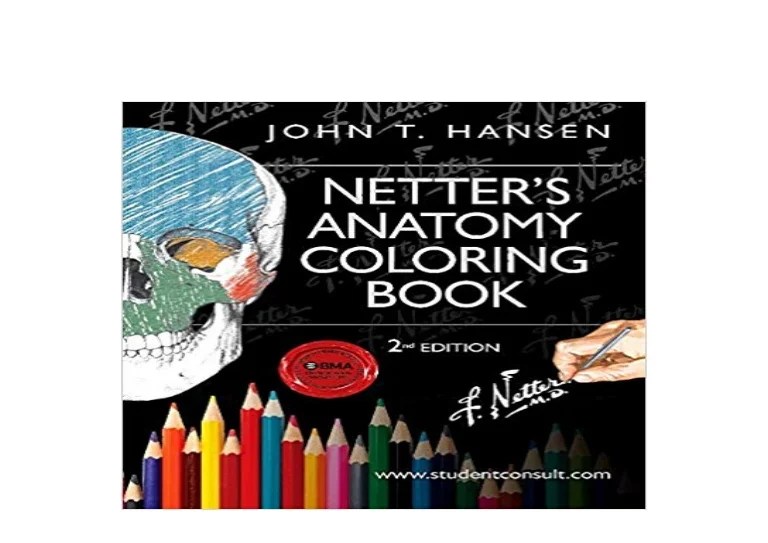Comparison with Other Anatomy Resources: Netter’s Anatomy Coloring Book

Netter’s Anatomy Coloring Book occupies a unique niche within the broader landscape of anatomical learning resources. Its strength lies in its active learning approach, but it’s crucial to understand how it compares to other established methods like traditional textbooks and atlases. This comparison will highlight the strengths and weaknesses of each resource, considering their intended audiences.
Different learning styles benefit from different approaches to anatomical study. Some learners prefer the visual richness of atlases, others the comprehensive detail of textbooks, and still others the hands-on engagement of coloring books. Understanding these differences helps in choosing the most effective learning tool.
Comparative Analysis of Anatomy Resources, Netter’s anatomy coloring book
The following table compares Netter’s Anatomy Coloring Book with other popular resources, considering their content, style, approach, strengths, weaknesses, and target audience. The comparison focuses on identifying the best fit for various learning styles and goals.
| Resource Name | Strengths | Weaknesses | Target Audience |
|---|---|---|---|
| Netter’s Anatomy Coloring Book | Active learning, engaging visual style, reinforces memorization through color-coding, relatively affordable, covers essential anatomical structures. | Lacks the depth of detail found in comprehensive textbooks, may not be sufficient for advanced anatomy students, relies heavily on visual learning. | Introductory anatomy students, visual learners, students needing a supplementary resource for memorization and comprehension. |
| Gray’s Anatomy for Students | Comprehensive coverage, detailed illustrations, clinically relevant information, excellent for in-depth understanding. | Can be overwhelming for beginners, expensive, less engaging for visual learners who prefer a less text-heavy approach. | Medical students, advanced anatomy students, professionals needing a comprehensive reference. |
| Sobotta Atlas of Human Anatomy | High-quality illustrations, clear labeling, systematic approach to anatomical regions, good for visual learners. | Can lack clinical relevance compared to some textbooks, may not be sufficient for in-depth study without supplemental reading. | Medical students, anatomy students needing a visually rich reference, those who prefer a systematic approach to learning anatomy. |
| Moore’s Clinically Oriented Anatomy | Strong clinical correlation, integrates anatomical knowledge with clinical practice, excellent for students interested in clinical applications. | May be too detailed for introductory anatomy students, less visually engaging than atlases, can be expensive. | Medical students, students interested in clinical applications of anatomy, professionals needing a clinically relevant reference. |
Netter’s Anatomy Coloring Book offers a detailed and engaging way to learn human anatomy. Its complexity, however, might feel daunting to some, unlike the simpler approach found in color by number coloring books , which are excellent for relaxation and basic skill development. Returning to Netter’s, the book’s intricate illustrations ultimately reward the effort invested, providing a deep understanding of the human form.



